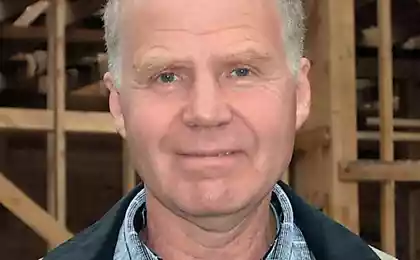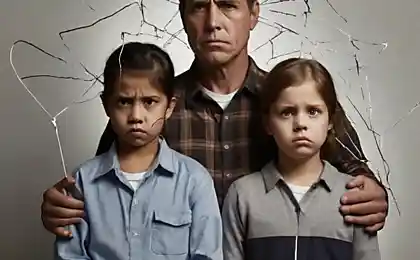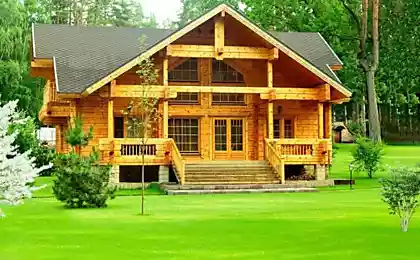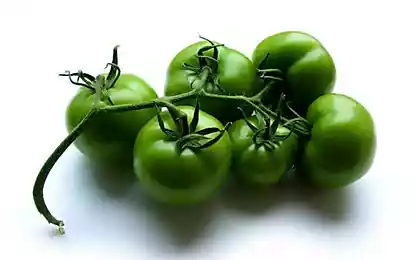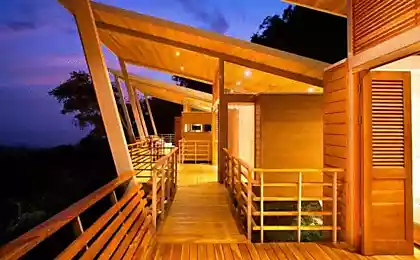537
Green homes or eco-technologies in construction
The increasing distribution not only worldwide, but also acquires environmentally friendly, "green" construction, which has become almost the leitmotif of modern architecture. Not far behind her, and technologies, are becoming more common.
The main postulate of the concept of sustainable building is minimal impact of the structure on the environment, and not in a local and global scale. Such neutrality is achieved mainly through the use of environmentally friendly materials in the construction process and finish, as well as through energy savings in operation. That is, the house itself does not emit into the environment hazardous substances and does not provoke the development of Allergy in the household. His heating system doesn't add to the atmosphere a cubic meter of combustion products. The overhaul will take a few decades, and will not become a regular necessity.
According to current European and local standards the house will be considered "green" if it meets a list of criteria including items such as the convenience of the location, intelligent control and price life cycle. But to private homes, which are unlikely to undergo international certification, but claim to be environmentally friendly, to apply two basic assessment criteria:
The most common material in the construction of eco-houses is wood, both as a primary consumable, and in tandem with stone and glass. One of the main visual manifestations of eco-style is considered the log house with an appropriate interior (the loft, rustic). But this is appearance, if we start from the definition, the houses on frame technology can also be considered eco, if the frame is made of wood, a filling of straw or Adobe (clay and straw) blocks and wooden paneling.

If you go still further, and beams can be attributed to the secure content, if its manufacture was not applied formaldehyde and other harmful chemicals. The same applies to brick and various blocks, these materials are the result of processing, but is unlikely to baked clay, or a derivative of sand, lime and cement will be more dangerous than a log, impregnated with flame retardants and antiseptics. Therefore, while the understanding of the most eco-style is the tree, as building envelopes and main finishes, it can be a house of silicate block with wooden and stone cladding and distinctive architecture.

Metal as roofing is also not out of the framework of environmental technologies, as modern polymer coating does not emit any substances, even in the summer heat, and the material has a long service life. Durability is one of the most important aspects – the less you will have to change coverage, the less costs. Of course, shingles and its variations are preferable, but quite acceptable and the variety of the seam, and shingles on a natural basis and natural grit.

When assessing sustainability great attention is paid to the decoration – the advantages of a wooden house is really negated if you use a chemically active coatings, various plates on the formaldehyde and vinyl with linoleum. Completely do without chemicals is almost impossible, but if you replace the varnishes and paint solvents oil and latex compositions, and for leveling partitions and use the plate on the basis of gypsum or cement, the indoor climate will be much healthier.
Energy efficiency
With regard to the environmental technologies and energy-efficient homes needs to be passive and zero energy consumption. Passive is the house in which the energy consumption for heating in winter and air conditioning in the summer is minimized. To achieve such performance by reducing heat loss through the building envelope and the most vulnerable areas, as well as through the installation of sealed doors and Windows. Important in terms of energoeffektivnosti and ventilation, are not a mode of ventilation Windows and air flow from the front door, and a special system, ideally with heat recovery. Such a system and the heat inside the brakes and simultaneously cleans, so the household is not the most useful not breathe fumes, and outside air flows without the "bouquet" assembled in the house.
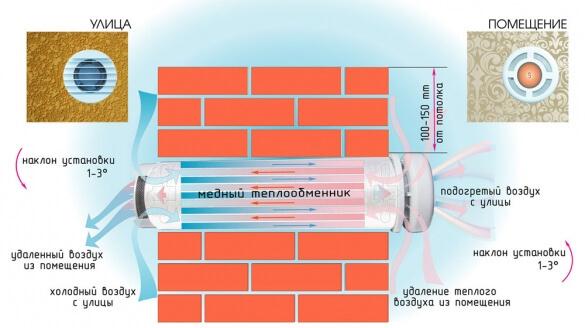
To minimize heat losses, using different insulation materials. But even today a huge selection of heaters, not all of them can be attributed to the environmentally friendly. About the security of basalt wool disputes, as the stone, the melt itself is neutral, but the binder is formaldehyde. But all the derivatives of the foam with eco-technologies are not compatible. Do not cause problems straw blocks, sawdust, cellulose, flax, jute or hemp and other natural materials.
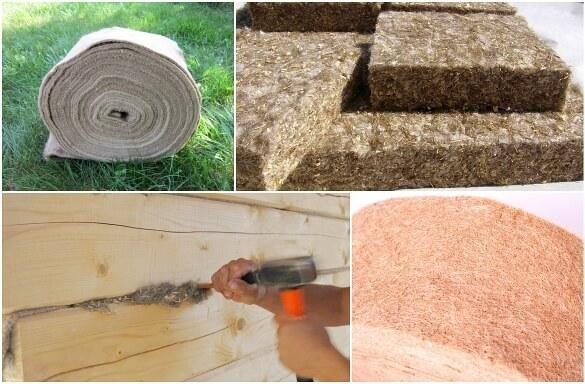
As for zero consumption, then we are talking about Autonomous systems functioning on renewable energy sources, the most common solar panels and wind turbines. And heating and hot water supply must be independent from third-party resources. In principle, a brick wood-burning oven is also Autonomous, and wood picking up slowly, but in the process are emitted to the atmosphere the products of combustion, so this is not an option. Like gasoline in the back, which does not contribute to sustainability, though, and provides some autonomy. In addition to energy, homes with zero consumption needs to be system of collection of rainwater and melt water, which after purification is supplied to network engineering or economic needs.

And if eco-friendly homes made from natural materials with effective insulation and minimal energy consumption we have enough, with zero consumption at least and there, but much less frequently. published
Source: www.forumhouse.ru/articles/house/6986
The main postulate of the concept of sustainable building is minimal impact of the structure on the environment, and not in a local and global scale. Such neutrality is achieved mainly through the use of environmentally friendly materials in the construction process and finish, as well as through energy savings in operation. That is, the house itself does not emit into the environment hazardous substances and does not provoke the development of Allergy in the household. His heating system doesn't add to the atmosphere a cubic meter of combustion products. The overhaul will take a few decades, and will not become a regular necessity.
According to current European and local standards the house will be considered "green" if it meets a list of criteria including items such as the convenience of the location, intelligent control and price life cycle. But to private homes, which are unlikely to undergo international certification, but claim to be environmentally friendly, to apply two basic assessment criteria:
- What materials are used in construction and decoration.
- Energoeffektivnost.
The most common material in the construction of eco-houses is wood, both as a primary consumable, and in tandem with stone and glass. One of the main visual manifestations of eco-style is considered the log house with an appropriate interior (the loft, rustic). But this is appearance, if we start from the definition, the houses on frame technology can also be considered eco, if the frame is made of wood, a filling of straw or Adobe (clay and straw) blocks and wooden paneling.

If you go still further, and beams can be attributed to the secure content, if its manufacture was not applied formaldehyde and other harmful chemicals. The same applies to brick and various blocks, these materials are the result of processing, but is unlikely to baked clay, or a derivative of sand, lime and cement will be more dangerous than a log, impregnated with flame retardants and antiseptics. Therefore, while the understanding of the most eco-style is the tree, as building envelopes and main finishes, it can be a house of silicate block with wooden and stone cladding and distinctive architecture.

Metal as roofing is also not out of the framework of environmental technologies, as modern polymer coating does not emit any substances, even in the summer heat, and the material has a long service life. Durability is one of the most important aspects – the less you will have to change coverage, the less costs. Of course, shingles and its variations are preferable, but quite acceptable and the variety of the seam, and shingles on a natural basis and natural grit.

When assessing sustainability great attention is paid to the decoration – the advantages of a wooden house is really negated if you use a chemically active coatings, various plates on the formaldehyde and vinyl with linoleum. Completely do without chemicals is almost impossible, but if you replace the varnishes and paint solvents oil and latex compositions, and for leveling partitions and use the plate on the basis of gypsum or cement, the indoor climate will be much healthier.
Energy efficiency
With regard to the environmental technologies and energy-efficient homes needs to be passive and zero energy consumption. Passive is the house in which the energy consumption for heating in winter and air conditioning in the summer is minimized. To achieve such performance by reducing heat loss through the building envelope and the most vulnerable areas, as well as through the installation of sealed doors and Windows. Important in terms of energoeffektivnosti and ventilation, are not a mode of ventilation Windows and air flow from the front door, and a special system, ideally with heat recovery. Such a system and the heat inside the brakes and simultaneously cleans, so the household is not the most useful not breathe fumes, and outside air flows without the "bouquet" assembled in the house.

To minimize heat losses, using different insulation materials. But even today a huge selection of heaters, not all of them can be attributed to the environmentally friendly. About the security of basalt wool disputes, as the stone, the melt itself is neutral, but the binder is formaldehyde. But all the derivatives of the foam with eco-technologies are not compatible. Do not cause problems straw blocks, sawdust, cellulose, flax, jute or hemp and other natural materials.

As for zero consumption, then we are talking about Autonomous systems functioning on renewable energy sources, the most common solar panels and wind turbines. And heating and hot water supply must be independent from third-party resources. In principle, a brick wood-burning oven is also Autonomous, and wood picking up slowly, but in the process are emitted to the atmosphere the products of combustion, so this is not an option. Like gasoline in the back, which does not contribute to sustainability, though, and provides some autonomy. In addition to energy, homes with zero consumption needs to be system of collection of rainwater and melt water, which after purification is supplied to network engineering or economic needs.

And if eco-friendly homes made from natural materials with effective insulation and minimal energy consumption we have enough, with zero consumption at least and there, but much less frequently. published
Source: www.forumhouse.ru/articles/house/6986
Super healthy drink to maintain immunity in the cold season
Electric buses "Bogdan" increased the power reserve to 250 km
